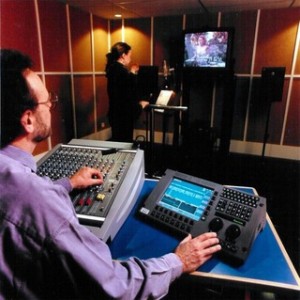
A definition of dubbing would be:
1. In film or television, the operation of replacing the original dialogue track with the spoken translation in another language.
To achieve the dubbing of a television series or movie, it is necessary to undergo a process that is arduous and fun at the same time. First, the script goes to a translator for a translation, then the manager must add the annotations for the sound, music and special effects that serve as support and complement the voice actors. The voice actors, in general, rehearse 3 or 4 times before recording the new script, listen through headphones to the original voice, in order to replicate the intonation and expressions. The translation is often corrected in order to select synonyms that are pronounced similarly to the word of the original audio.
Dubbing has many detractors, especially in countries where it is not a common practice. It is usually argued that it devalues films and television programs. Comedians such as Steve Martin and Ben Stiller lose portions of their humor when their voices are dubbed into another language, since much of their humor arises from intonation and exactly how they express their words.
In many cities in Europe, dubbing is considered as a barrier to multilingualism. In countries where subtitles are preferred basic knowledge and understanding of English are statistically much higher than in countries where dubbing is normally used.
Proponents argue that subtitles interfere with vision and obstruct the image. Some people think that reading them is a distraction (people have to be highly concentrated reading the subtitles and at times miss what is happening on the screen).
If you want more information on dubbing and subtitling services at Trusted Translations, visit Multimedia Translation.
(Spanish version: Doblaje de Películas y Series)
